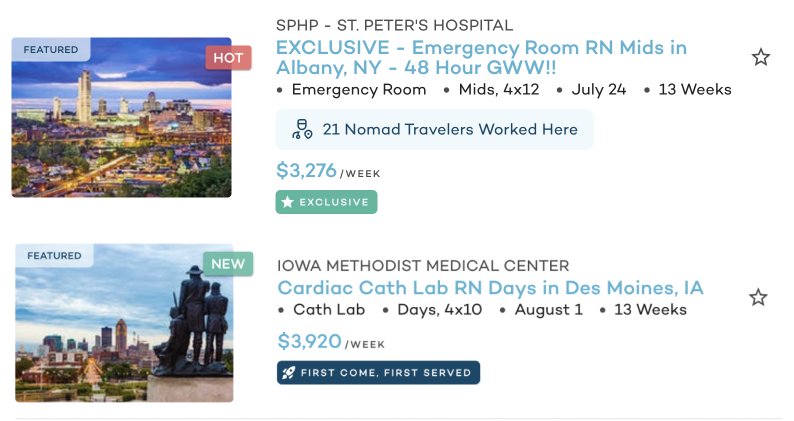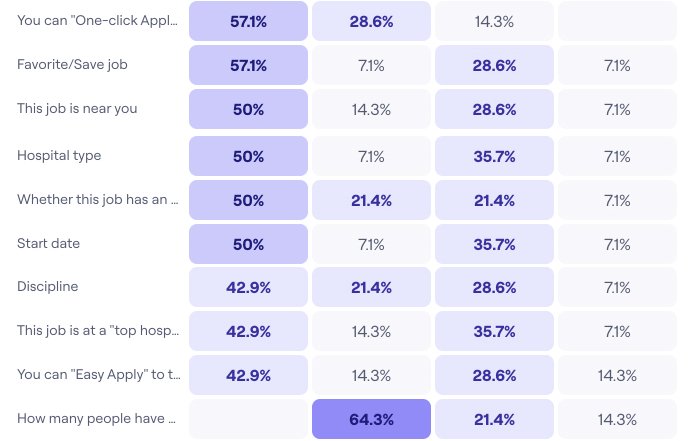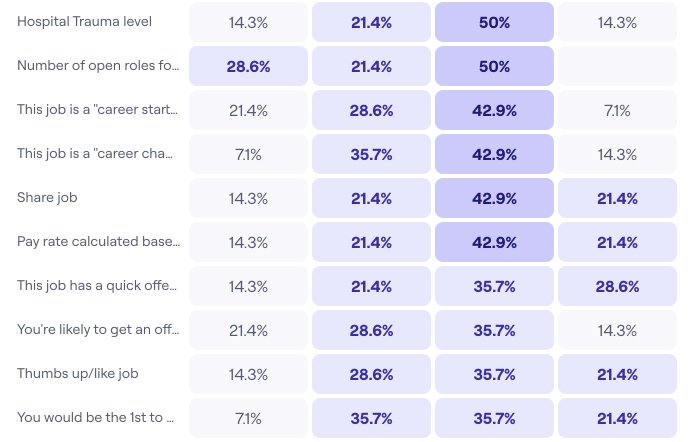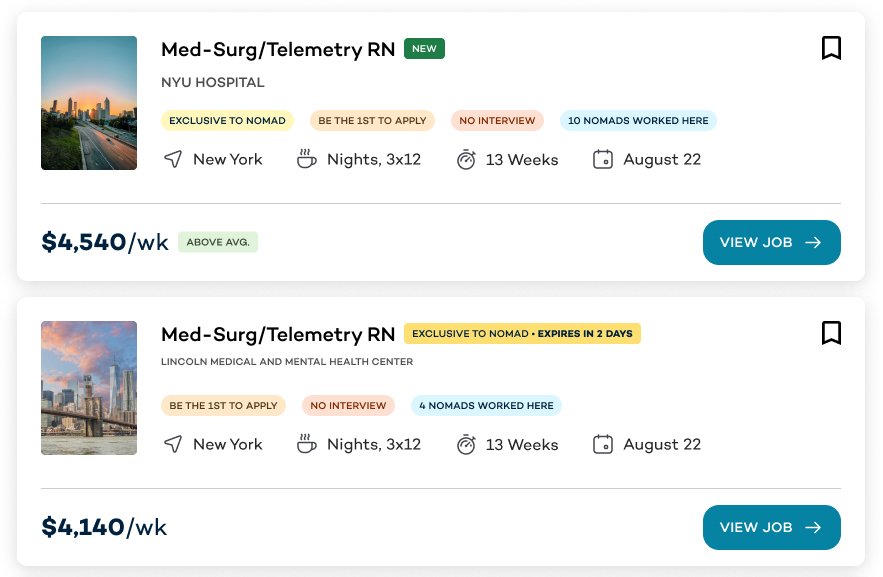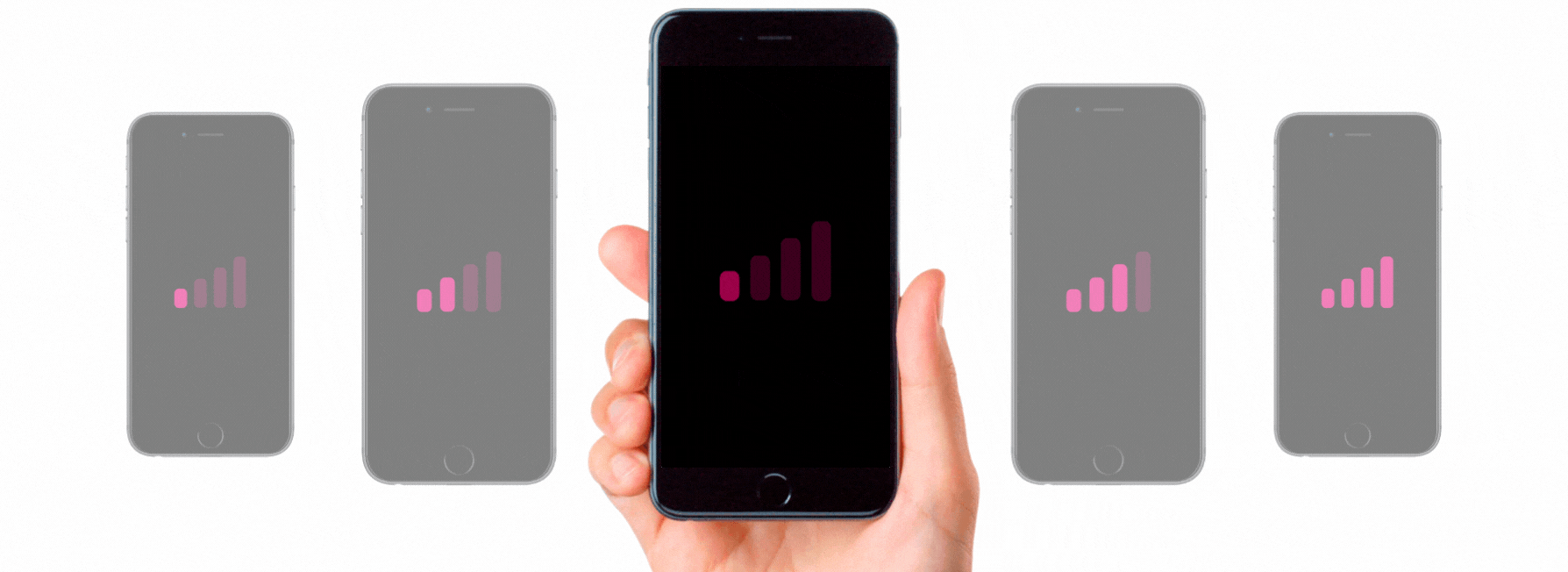Job Listings
Test description
Job Listings
Problem + Context
Nomad Health is a recruiter-less platform that connects 300k+ Travel Nurses and Travel Allied Health Professionals to jobs across the country. As the Job Discovery UX Lead, I conducted a heuristic evaluation of the search experience and identified a few key areas of opportunity that would enable my team to drastically improve user experience and in turn, drive higher engagement.
Project Goals + KPIs
The primary goal was to boost engagement: efficiently funneling high-intent users to the job details page, where they could learn more about the job and apply. (In our case, a high-intent user was someone who wanted to start an application.) I hypothesized that by “cleaning up” the search results and only showing users the information that was most pertinent to their search, we could decrease the mental load taken on by our users enabling them to decipher whether a job could be right for them.
Metrics: Targeting a rise from 24% to 30% in Job View to Application Start
Role + Collaboration
Steering job discovery, job search and all related initiatives were entirely under my ownership. My synergy with Product Managers, Engineers and QA Analysts fostered a seamless Agile environment. Additionally, the success of this initiative was a result of close collaboration with our research coordinator, machine learning team, job posting team, marketing, and clinician excellence (former healthcare providers employed by Nomad Health), and other cross-functional partners.
Tools
Research was conducted in Maze and UserInterviews, data was sourced from Amplitude and Fullstory, and designs were produced in Figma.
Job Results: Starting Point
Job titles are long and distracting, information is repetitive, and tags like “Hot” and “1st Come, 1st Serve” are not meaningful.
Research
Card Sorting: Direct feedback from 12 participants illuminated job information organization preferences
Focus Groups: 16 users dissected designs in varying levels of fidelity
Low-fi mockup
Hi-fi mockup
Research summary: a simplified, clarified job card means informed, confident users
The process of job searching can be a daunting and tedious one even for the most seasoned travel nurses. That said, anytime we can make a job listing card easier to digest by:
Simplifying (e.g., removing excess information, arranging content according to usability standards, using tools like color to differentiate information, etc.), and
Clarifying (e.g., explaining industry standard and Nomad-specific terminology)
... we are not only enabling our users to make a faster decisions regarding a job, but also empowering them to feel informed and capable to make the right decision.
Design Decisions
Unified Layout: A coherent design across web and native mobile for streamlined operations
Job Titles: Precisely tailored for minimal visual distraction
Photo Removal: Addressed compliance issues and error prevention
Improved Tagging: Re-evaluated and refined job tags based on user feedback and research insights. A closer look at job tag logic:
Outcomes
Primary Metric: The Job View to Application Start metric witnessed a 5% improvement in conversion
Tag-Specific Engagement: Jobs with the "Exclusive" tag saw a 17% improvement in click-through rates, while those with the "Auto-Offer" tag experienced a 14% boost
Completion Metrics:
Job View to Job Application Completed: 12% improvement
With the "Exclusive" tag: 16% improvement
With the "Auto-Offer" test: 19% improvement
Continuous Iteration
After the MVP redesign was released to 100% of users, we introduced the “One-Click Apply” tag to qualified users. This improvement lead to 12% more clicks with a surge of 6.2% in travel nurses with applications submitted, and a 20% decrease in application completion time.
As a member of Nomad’s first design system team, I created accessible and scalable components as part of an organization-wide rebrand. Below are the transformed job listing designs:
Responsive Web Experience
Native Mobile Experience

